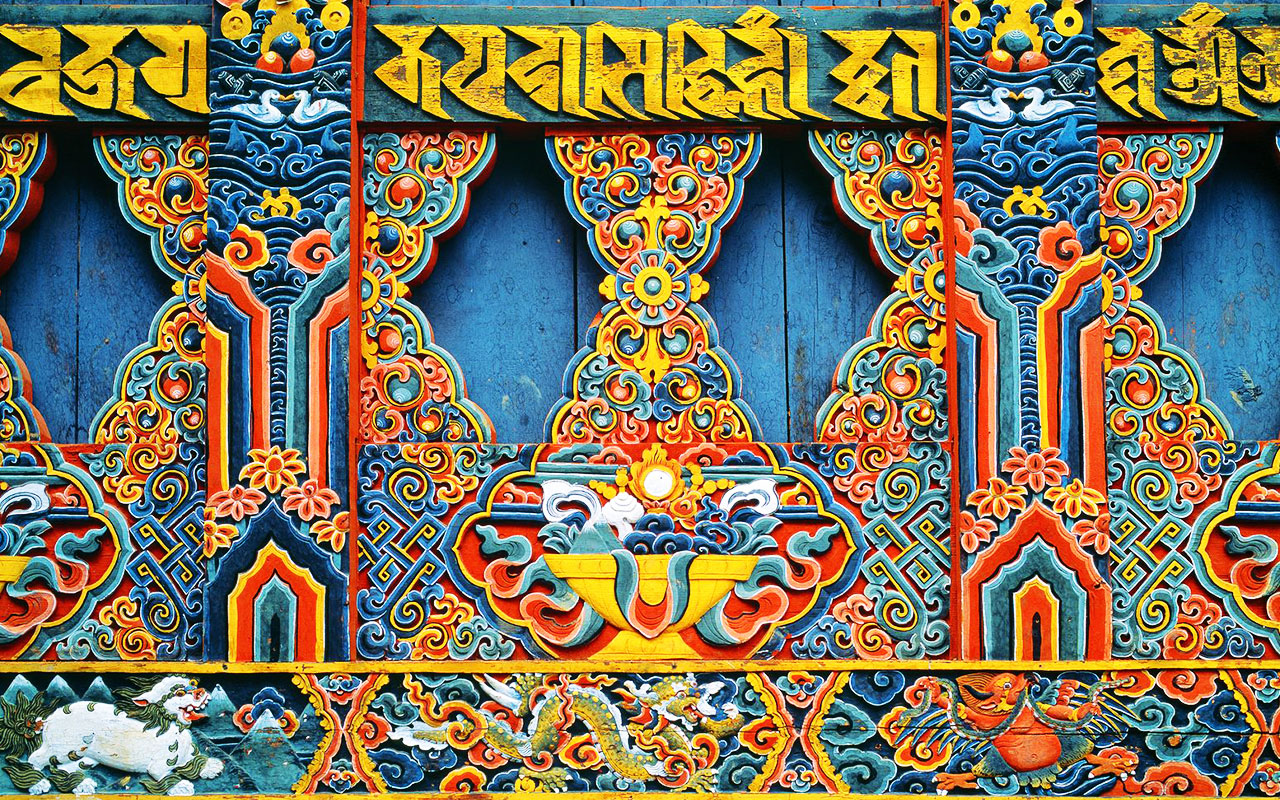
Art and Craft
Bhutanese art and crafts, particularly those that are religious in their thematic content, follow strict iconographic rules. Merit can be earned only if the prescribed rules are strictly followed. The use of creative energy is used mostly in secular artistic ventures. Zorig Chosum or the 13 traditional arts and crafts includes shinzo (woodwork), dozo (stonework), jinzo (clay crafts), lugzo (bronze casting), parzo (wood, slate and stonecarving, lazo (painting), shagzo (wood turning), garzo (blacksmithy), troeko (sliver and goldsmithy), tsharzo (bamboo and cane crafts), dhezo (papermaking), thagzo (weaving) and tshemzo (tailoring).
The skill of Bhutan's craftsmen's working with bronze, silver and other fine metals is seen in myriad ways: statues of deities, doors and pillars of temples, bells, trumpets, swords, tables, candlesticks, rice boxes and jewelry. Wooden crafts include a wealth of items from bowls to finely worked bamboo hats, baskets, butter containers, and bows and arrows.
Architecture is also a significant feature of the Bhutanese identity. Dzongs (fortress). Lhakhangs (temples), Goenpas (monastries), Chortens (stupas), palaces, bridges, and housing that can be seen across the countryside form diverse but harmonious architectural expressions of the cultural heritage and living traditions of the Bhutanese people. The unmatched combination of engineering skill and aesthetic beauty is reflected in all structures. Traditional shapes, color, patterns, and "motifs" on walls, doors, and windows place Bhutanese architecture in a class of its own.
Among the diverse architectural expressions of the country are the castle- like Dzongs, with their massive stone walls, large courtyards, and beautiful architecture. These impressive monasteries, set in commanding positions on hilltops or at the confluence of rivers, are the administrative centers of their regions. The Dzong represents a unique architectural marvel. Hundreds of wooden planks are joined together without a single nail, and no formal architectural plan goes into its construction.
Secular architecture in Bhutan finds its main form in traditional farmhouses. Bhutanese houses have a distinct character from those of other Himalayan countries. Because of the steep terrain, they are usually built as scattered houses or in clusters, rather than in rows.
Most traditional houses are relatively spacious and take advantage of the natural sunlight. Family dwellings are often three storied, with room for livestock on the ground floor, storage and sometimes living quarters on the second floor, while the third floor houses living quarters and a Choesham (shrine). Between the third floor and the roof an open space is usually kept for open-air storage. Boulders over the lath are used to hold down wooden shingles on the roof truss. Windows and doors are normally painted, giving the house a very festive appearance. Floral, animal, and religious motifs are mainly used as themes for colourful paintings. The typical construction materials used in traditional Bhutanese houses are timber, stone, clay and bricks.



